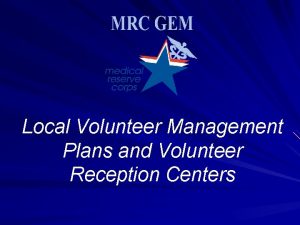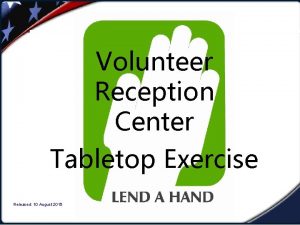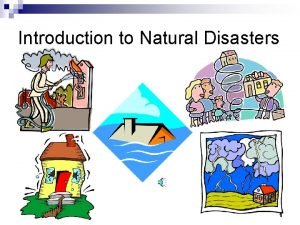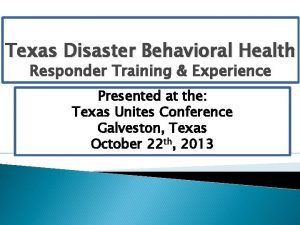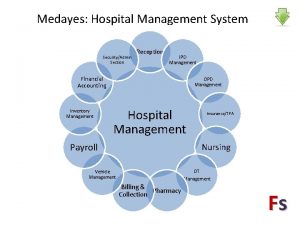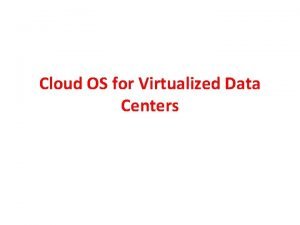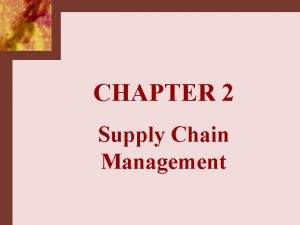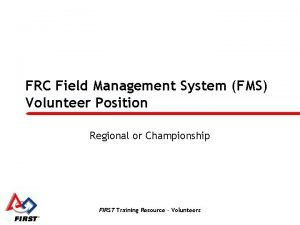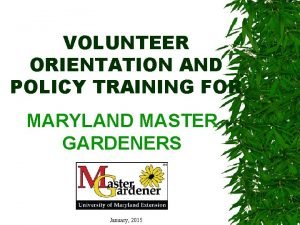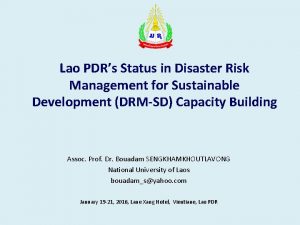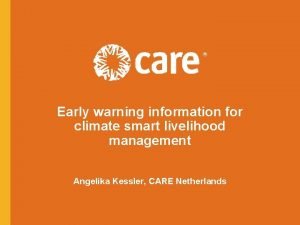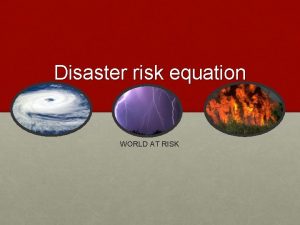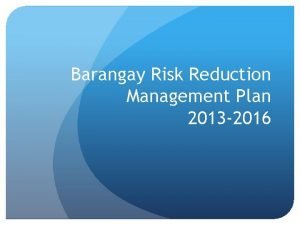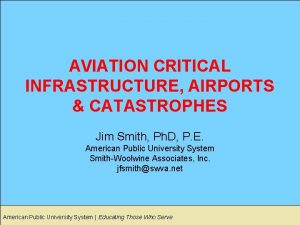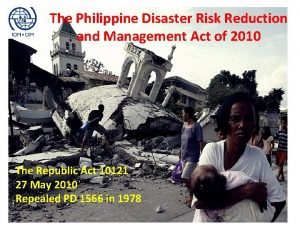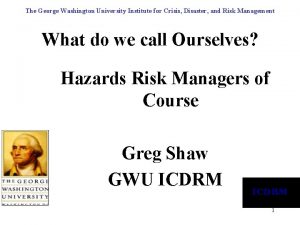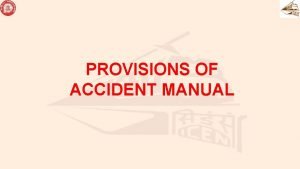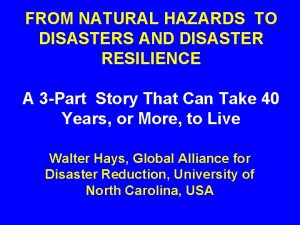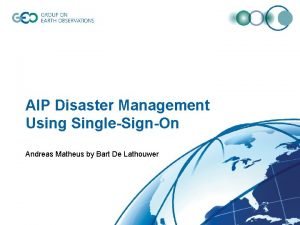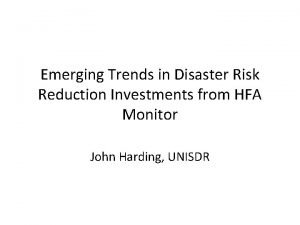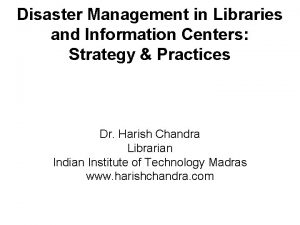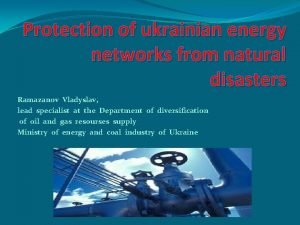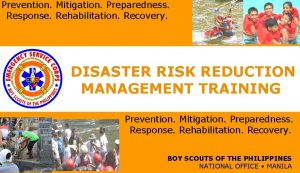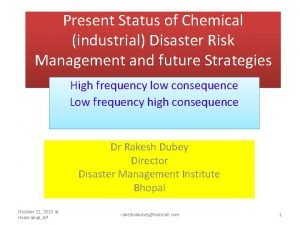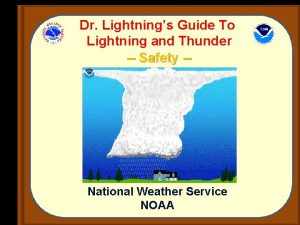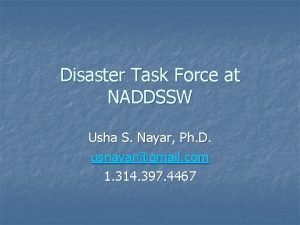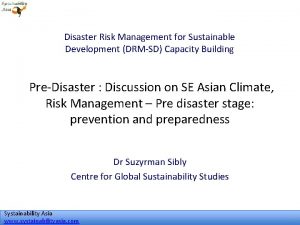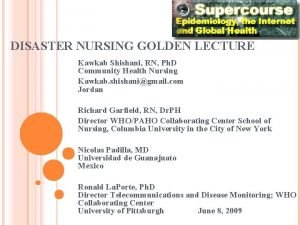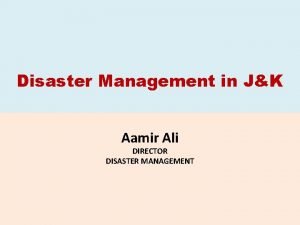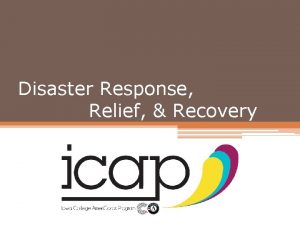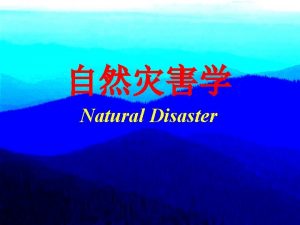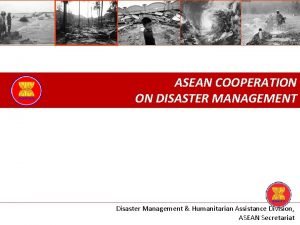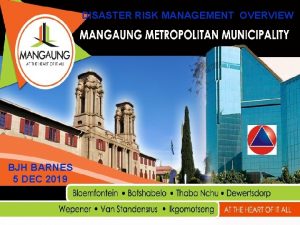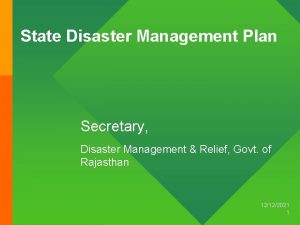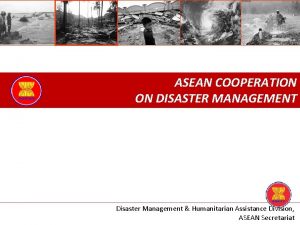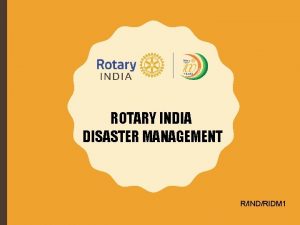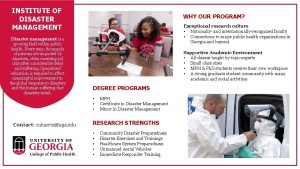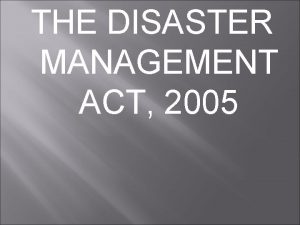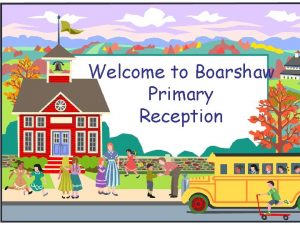Disaster Volunteer Management Volunteer Reception Centers Definitions Volunteer






































- Slides: 38

Disaster Volunteer Management & Volunteer Reception Centers

Definitions • Volunteer: willingly provides services without receiving financial compensation • Affiliated Volunteer: affiliated with government agency or NGO and who has been trained for a specific role or function in disaster relief or response during the preparedness phase; typically used first in disaster • Spontaneous Volunteer: comes forward (at times without being requested) following a disaster to assist a governmental agency or NGO with disaster related activities during the response or recovery phase, not initially affiliated with a response or relief agency, also called convergent or unaffiliated volunteers

Currently • Many jurisdictions across the state have started to plan for disaster volunteers • Volunteer Centers are working in cooperation with local government to identify an appropriate role to play in managing disaster volunteers

Objectives of Disaster Volunteer Management Before a Disaster: • Encourage non-profit and governmental agencies to effectively involve volunteers in the four phases of disaster (mitigation, preparation, response & recovery) • Encourage community members to become affiliated volunteers with existing disaster preparedness, response and recovery agencies (allows for training, best use of skills, credentialing as needed, etc. )

Objectives of Disaster Volunteer Management Before a Disaster (continued): • Plan and prepare for spontaneous volunteer management • Train agencies unable to host affiliated volunteers how to access and manage spontaneous volunteers following an event

Objectives of Disaster Volunteer Management After a Disaster • Assist the local lead agency with the coordination and management of spontaneous volunteers in order to effectively complement response and recovery efforts

Spontaneous Volunteer Management • Included in the National Response Framework • Identified as a critical aspect of disaster preparedness, response, and recovery by FEMA, National VOAD and the Points of Light Foundation • MUST be addressed prior to a disaster to maximize effectiveness • The role of the Volunteer Center in local preparedness and response initiatives

Volunteers May be Called Upon to. . .


What is a VRC? • Serves as a point of mobilization, registration and referral for spontaneous, unaffiliated volunteers who emerge in response to a disaster or incident

Why are VRCs necessary? • Help potential volunteers respond more effectively to critical needs of the community (as determined by coordinating agencies) • Make the best possible use of spontaneous volunteers • Serve as a buffer between first responders and wellintentioned, unaffiliated volunteers • Many agencies are not able/willing to create and maintain relationships with affiliated disaster volunteers specific to disaster

continued Why are VRCs necessary? • Complement rather than complicate efforts of first responders (including those in disaster response organizations tasked with functions apart from spontaneous volunteer management) • Ensure that urgent community needs are addressed in a timely manner • Lay the foundation to rebuild community

Where will VRCs be located? • Communities should identify several sites in the community as potential locations. • Libraries, senior centers, faith communities may be considered. • Locations will be determined after the event based upon the situation and need.

When are VRCs activated? • Volunteer Reception Centers DO NOT self deploy. • Normally, a request comes into the VEOC for assistance with handling the volunteer surge. Localities can also have a prearranged agreement with their local volunteer center or other agency.

Who staffs VRCs? • Members of the Volunteer Center Staff • Volunteer Coordinators from local non-profit and governmental agencies • Community Members trained in the process, procedures and paperwork of registering and referring spontaneous, unaffiliated volunteers • Select SUVs who appear at VRCs

Referral Confirm. Sa fe ty Interview Volunteer Opportunities VRC Sample Floor Plan Identific. Greeter Exit Entrance

Registering Spontaneous, Unaffiliated Volunteers Step 1 Upon Arrival

Upon Arrival Incoming Volunteers will: • • • Be met by a Greeter Sign-in on the Volunteer Tracking Sheet Receive: Volunteer Instructions Volunteer Intake Form Be asked to review the list of volunteer opportunities available All incoming volunteers should be told that photo identification is required for registration!

The Interview Step 2 Determining Referral

The Interview • Each incoming volunteer will be seen by an Interviewer who will review the Intake Form for completeness. • The Interviewer will confirm if the volunteer can meet an immediate need or would prefer to wait.

The Interview • If volunteer prefers to wait, confirm methods of contact. • Registered volunteers can choose to wait at VRC IF appropriate or wait elsewhere. • Intake Form is held at VRC. • If volunteer elects to provide a service, the Interviewer will complete a Referral Form. • The Referral Form contains site contact information and service(s) requested.

Agency Referral Confirmation Step 3 Confirming Agency Need & Contact Information

Agency Referral Confirmation • The Referral Form is reviewed for completeness. • Site Directions are verified. • Volunteer’s Name is documented on an Agency Tracking Form. • Filled & Incoming requests are relayed to the volunteer opportunity board.

Safety Briefing Step 4 General Safety Orientation

Safety Briefing • A general orientation to the situation with basic safety instructions will be presented. • Confidentiality is critical. • Following directions is a must. • Additional training may be available at site. • Provided orally and in written form • Volunteer sign-in to document attendance.

Volunteer Identification Step 5 Verification of Identity

Volunteer Identification • The volunteer’s Referral Form and form of identification will be compared and documented. • A Volunteer Center wristband will be attached to the volunteer, its number recorded next to the volunteer’s name.

*May vary from jurisdiction to jurisdiction VRC Support Staff • VRC Media Coordinator Responds to ALL media requests • Logistics Coordinates setup and supplies • Security Ensures safety measures are implemented and followed • Data Entry Staff Accurately records all VRC information into a database • Communication Staff – Phone Bank – Agency Liaison Collects and delivers accurate information to callers or e-mailers • Runners Carry information from station-to-station as needed.

VRC Management • VRC Director • VRC Manager/s

VRC Director • Serves as Incident Commander for VRCs • Maintains direct communications with local EOC • Requests support services from locality • Locates VRC Manager • Assists with location’s logistics • Determines VRC hours of operation (in conjunction with EOC)

VRC Manager/s • Serves as VRC Operations Manager • Oversees the smooth operation of an individual VRC • Maintains regular communications with VRC Director • Provide VRC staff with regular updates • Establish shift & rotation schedules • Determines a plan for closing VRC (in conjunction with local EOC)

VRC Training Manual • Developed to allow VRC staff to train spontaneous volunteers to assist as needed • Contains general information, forms, and resources • Presents information in context so volunteers gain an overview of the process in addition to position specific information • Agencies may wish to use it to develop their own volunteer training manual for use in disaster (overview available upon request)

Agencies How to access volunteers through a VRC • Agency must be registered with Volunteer Reception Center • Complete and submit Disaster Volunteer Request Forms • Submit new/updated requests as needed (Procedure determined by event: may be via online submission, phone, fax, or physically going to a VRC to report needs) • Point of Contact: Communication Staff, Agency Liaison

Volunteer Management – the basics • The non-profit/governmental agency requesting volunteers is responsible for volunteers’ compliance with any and all agency regulations and/or requirements • Plan for disaster volunteers – create forms, checklists, and procedures in advance (intake form, liability form, safety training, volunteer log, position descriptions, written policies and procedures, etc. ) • Designate individual to supervise volunteers • Determine process by which volunteers will be selected (Please note: agencies may decline volunteers and volunteers may decline agency referral. The VRC is not responsible for a complete screening volunteers. ) • Track hours for potential reimbursement from state or FEMA

continued Volunteer Management – the basics • Volunteer training & supervision • Volunteer dismissal – always an option, easier to manage with written position description, policies and procedures • Volunteer recognition

Lessons Learned • Planning for disaster volunteers is essential • Liability and risk management needs to be addressed early • Communities outside of the affected area may play a role in disaster volunteer management Providing direct or indirect service upon request and/or Helping to educate the public regarding effective volunteer and donations protocol

Lessons Learned con’d • Common Messaging is CRITICAL • Value of tracking volunteer hours for potential use as matching for federal and state reimbursements • Models for disaster volunteer management will vary from place to place and will look different in a pandemic situation

Final Thoughts & Questions
 Volunteer reception center
Volunteer reception center Volunteer reception center
Volunteer reception center Conclusion on disaster management
Conclusion on disaster management Texas disaster volunteer registry
Texas disaster volunteer registry Hospital reception management system
Hospital reception management system Cloud os for virtualized data centers
Cloud os for virtualized data centers Investment center
Investment center Cscmp logistics definition
Cscmp logistics definition Marketing meaning in marketing management
Marketing meaning in marketing management Management accounts meaning
Management accounts meaning Meaning of financial management
Meaning of financial management Financial management means
Financial management means Frc volunteer roles
Frc volunteer roles Virginia master gardener volunteer management system
Virginia master gardener volunteer management system Conclusion in disaster management
Conclusion in disaster management Early warning system in disaster management
Early warning system in disaster management What is the disaster equation?
What is the disaster equation? Records management disaster recovery plan
Records management disaster recovery plan What is the role of government in disaster management
What is the role of government in disaster management Disaster management centre sri lanka
Disaster management centre sri lanka Civil defence disaster management
Civil defence disaster management Bdrrm plan message
Bdrrm plan message Aviation critical infrastructure
Aviation critical infrastructure Philippine disaster risk reduction and management act
Philippine disaster risk reduction and management act Institute for crisis disaster and risk management
Institute for crisis disaster and risk management Disaster management
Disaster management 4 pillars of disaster management
4 pillars of disaster management Disaster management conclusion
Disaster management conclusion Emerging trends in disaster mitigation
Emerging trends in disaster mitigation Disaster management in libraries and information centres
Disaster management in libraries and information centres Conclusion on disaster management ppt
Conclusion on disaster management ppt Republic act 10121
Republic act 10121 Hotmail
Hotmail Objective of disaster management
Objective of disaster management Poster on disaster management with slogan
Poster on disaster management with slogan Conclusion on disaster management
Conclusion on disaster management Disaster management and sustainable development
Disaster management and sustainable development Nurse role in disaster management
Nurse role in disaster management Croreevaluation
Croreevaluation
